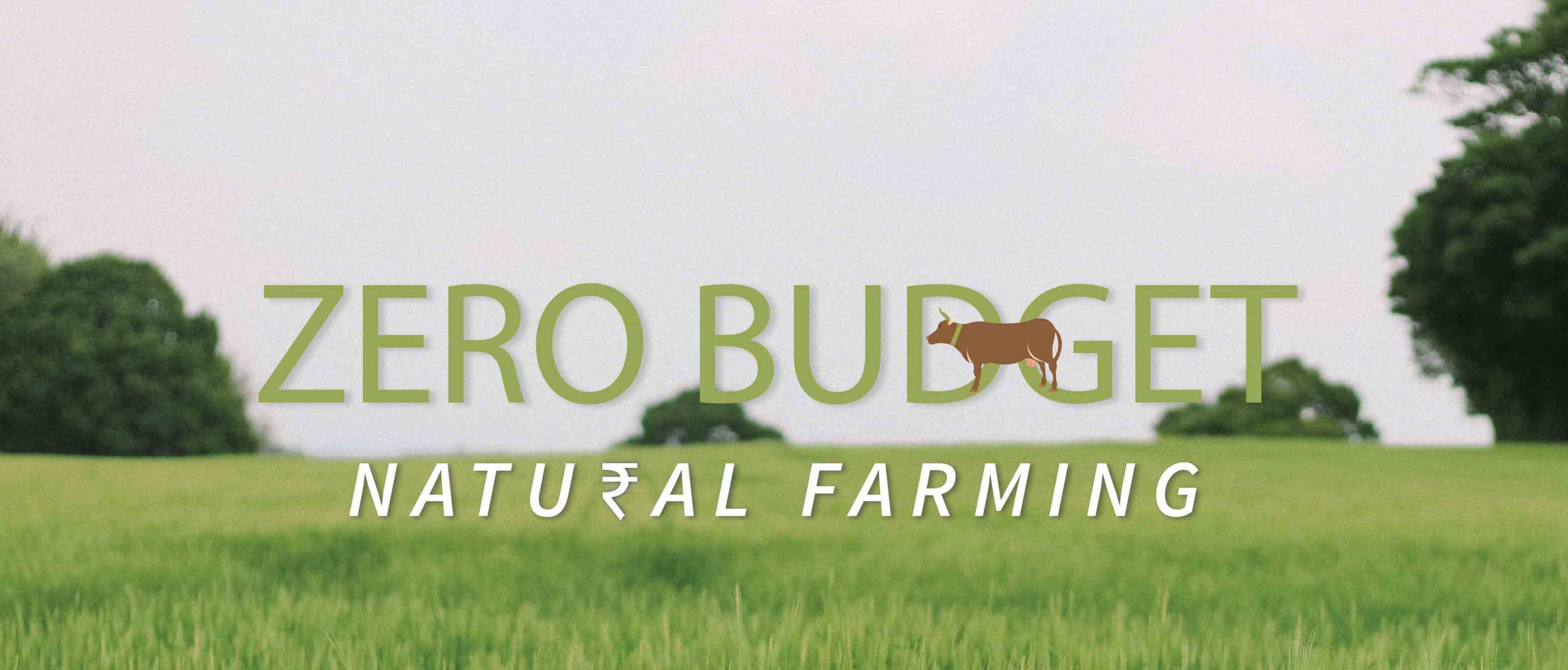ZBNF and Resilient Food Systems
February 12, 2020 | Expert Insights

Background
Zero budget natural farming (ZBNF) is a traditional Indian farming method that advocates chemical-free agriculture. It is a commercial level farming that can be done with minimal to zero budget, while using locally available, farm-based resources. It is a collaborative effort of Subhash Palekar, a farmer and the Karnataka Farmers Association (KRRS).
Over the years, the distress in the agriculture sector has been pulling down India’s GDP. The agriculture growth has been a paltry 2.8% against a targeted 4%. Furthermore, with a rising population, it could impinge on food security in years to come.
The 2020 Indian budget proposes to double farmer incomes with various sops and benefits to farmers. It also emphasised on ZBNF.
Analysis
The neo-liberalisation of the Indian economy has led to a deep agrarian crisis making small scale farming unprofitable. The farmer is trapped in a vicious cycle of debt to meet the high input cost and confronted by unsustainable interest rates and a volatile market.
Zero-Budget Natural Farming (ZBNF) is a holistic alternative to the present paradigm of high-cost chemical inputs-based agriculture. It is effective in addressing the uncertainties of climate change and its principles are in harmony with the principles of Agroecology. It draws its uniqueness by adapting the latest scientific discoveries while remaining rooted in traditional Indian methods. The UN-FAO has encouraged countries to adopt Agroecology to meet the twin goals of global food security and environmental conservation.
ZBNF believes in the natural growth of crops without using fertilisers and pesticides. Zero Budget implies that input costs are negligible as seed treatments and other inoculations are resourced locally from farm-based resources like cow dung and cow urine. It is claimed that 98% of the supply of nutrients can be extracted from the air, water, and sunlight. The remaining 2% are fulfilled by good quality soil with plenty of friendly microorganisms, as in natural systems like forests.
ZBNF functions on four pillars, the first called the “jivamrutham,” which is a fermented microbial culture made from cow dung and cow urine which acts as a catalytic agent in the soil, promoting microorganic activity. The second is a similar mixture called ‘bijamrutam' or treatment of seeds which protect young plants from fungus and soil-borne diseases. The third is "Achadana” or mulching. The fourth pillar is the concept of “Whapasa” or moisture, that counters the idea that plants need a lot of water.
Climate change is wreaking havoc on agriculture with extreme weather events like floods, droughts, locust swarms causing soil degradation, soil salinity, water shortage and reduction in nutritional properties of major crops. The CO2 concentration is expected to lower the amount of zinc, iron and protein and raise the starch and sugar content in wheat and rice. Water-stressed regions such as North Africa, Middle East, western USA, northern China, parts of India and Australia are expected to face heightened food production constraints due to water scarcity. A resilient global food sourcing system is, therefore, because as per UN estimates, by 2050, we will have 9.6 billion mouths to feed.
Counter point
NITI Aayog, a strong votary of ZBNF, have advised that scientific validity of the scheme has to be carried out in varying soil and climate conditions to establish its long term impact and viability before scaling it up for pan India implementation. A limited study in Andhra Pradesh claimed a sharp decline in input costs and improvement in yields. The report also suggests that many farmers have reverted to conventional farming, after seeing their ZNBF returns drop after a few years. This has reinforced the doubts about the method's efficacy in increasing farmer's incomes.
The Indian Council of Agricultural Research is studying the ZBNF methods practised by basmati and wheat farmers in UP, Punjab, Uttarakhand and Haryana, evaluating the impact on productivity, economics and soil health including soil organic carbon and soil fertility. Their conclusions will thereafter set the stage for the widespread implementation of ZBNF.
Assessment
ZBNF is a ‘win-win’ proposition for both the farmer and the state. Despite the periodic increase in the Minimum Support Price, the average Indian farmer continues to struggle. The increasing input costs, diminishing soil fertility, sinking water table, are resulting in poor returns. It benefits the government as the subsidy on fertilisers, electricity and fuel etc. will come down, allowing better fiscal management of the budget.
While ZBNF cannot be hailed as the panacea for all that ails the Agri Sector, one aspect does merit consideration. The land devoid of chemicals for at least some period of time may recover the natural fertility of the soil. However, the scientific jury is still out whether this natural healing will actually take place.
Minimum support prices, farm subsidies, and direct benefit transfers are simply temporary measures that the government can take and do not make the farmer’s lot better in the long term. These policy failures have arisen as the market demand is highly inelastic, and when the production increases, the prices fall drastically.
Along with methods like ZBNF, R&D has to be strengthened to evolve new seed varieties, efficient pesticides and resilient climate crops. Globally funding must be disbursed in that direction.
Image Design: Chris Karedan, Synergia Foundation








Comments